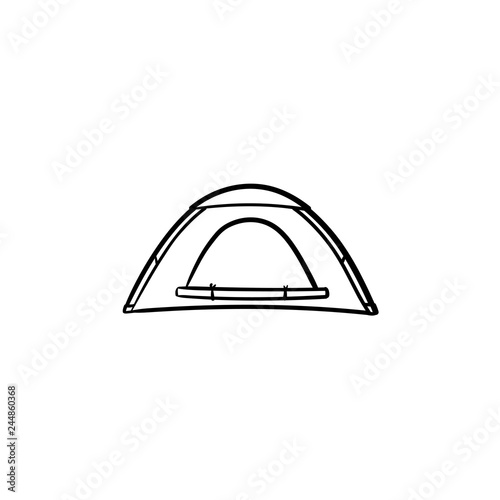The Grasp Hitch is a simple and safe and secure method to set outdoor tents person lines. It's also a great strategy for backing out a stubborn outdoor tents secure. It can also be made use of to produce a flexible tarpaulin guy line where the change is made at the tent/tarp end. It works in high winds as it does not slide.
1. Bowline
Bowline is a knot that makes a loop at one end of a rope. It's easy to tie and untie, and it resists obstructing fairly well.
It's additionally a great knot to make use of for signing up with 2 lines with each other, although it's normally suggested that you make use of a different strategy (such as a sheet bend or square knot) for this purpose, to avoid having both different bowlines put on versus each other gradually and deteriorate the line.
One prospective issue with bowlines is that they can easily jam or bind if the working end is incorrectly travelled through the bunny opening. A number of vital failures have been reported as a result of this, especially when made use of in climbing up applications. To assist avoid this from happening, you can make a left-handed bowline by passing the end around the standing part of the loophole as opposed to with it, as displayed in the animation listed below. This variant apparently carries out much better and withstands ring stress (a distending pressure applied either side of the knot) better than the standard bowline.
2. Grasp Drawback
Utilizing these gripping drawbacks to protect your man lines helps you stay clear of the trouble of your line jamming while changing or tightening them. They are also valuable when affixing a line to an item that is harder to get to than your standing end, such as a tree or big anchor things.
The Hold Hitch is a rubbing knot that can be quickly shifted up or down the line while slack however holds firm under load. It serves for tensioning ridgelines or person lines and for camping applications to protect tarps or outdoors tents.
To link the Hold Hitch, pass the working end around the standing part two times and put it under itself. To tighten, pull on the working end to develop a bight and afterwards make use of the bight to safeguard the knot to itself. For included safety, you can cover the functioning end around the standing part three times to enhance friction and prevent the hitch from sliding under lots.
3. Midshipman's Drawback
Additionally referred to as the Taut Line Drawback (ABOK # 1856, p 310), Adjustable Hitch, or Rigger's Hitch this knot develops a flexible loophole at the end of a rope that can be moved backwards and forwards the standing end however still holds firmly when tightened. It is likewise easy to untie while under lots.
Ashley advises this knot for an outdoor tents person line since unlike the bowline it can be connected while under tons and is less susceptible to twisting. It also creates an intermediate Awning Hitch that can take the initial lots while tying the last Half Hitch
To utilize this knot cover the functioning end around an object such as a post or cleat. Next pass it back towards the things via the first Fifty percent Drawback creating a 2nd Awning Drawback. Finally surface linking the last Fifty percent Hitch and pull hard to outfit canvas tarp and tighten. For additional protection cover a second Midshipman's Hitch on top of the first.
4. Flexible Hold Hitch.
The Adjustable Grasp Hitch, also called the Crawley Adjustable Drawback and the Adjustable Loop Knot, is a rubbing hitch that can be easily changed up or down a line with slack however holds firm under load. It is generally utilized for changing tent ridge lines or tarpaulins around camp.
This slide-and-grip knot offers good hold and is simpler to link than the Tautline Drawback or Midshipman's Hitch, yet shouldn't be made use of for important applications because it might slip when shock loaded. It can be boosted by adding added starting turns to raise the "hold" and friction in unsafe materials.
To link this friction drawback, pass the working end around the things, then cover it back together with itself and put the end under the 2nd turn. Pull the functioning end to tighten the knot.
